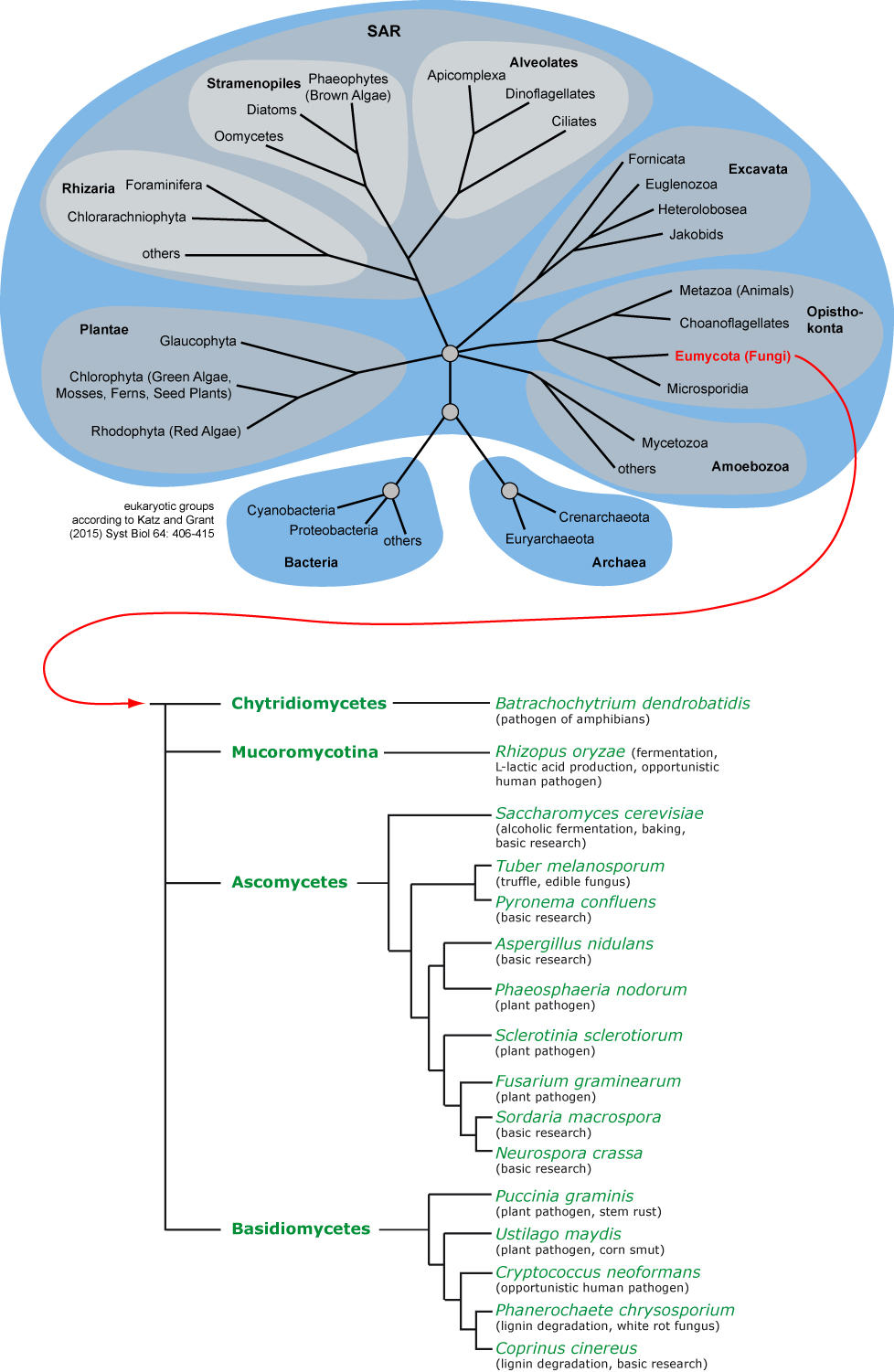Functional genomics of fungal morphogenesis: Why work with fungi? |
 |
Functional genomics of fungal morphogenesis: Why work with fungi? |
 |

This picture shows a somewhat simplified phylogenetic tree
of some major groups of eukaryotes in the top blue part (indicated in the lower blue parts are the other two major groups of living organisms, the bacteria and the archaea).
As we know today, the majority of eukaryotic species are unicellular, and only few groups
(e.g. plants, animals, fungi and kelps) have evolved to form complex multicellular structures. Eumycota or 'true fungi' are shown in red, they are a sister group to the animals.
A more detailed phylogeny of fungi is shown below (indicated by a red arrow). Fungi can be subdivided into several major groups, four of which are shown here:
The Chytridiomycetes, Mucoromycotina, Ascomycetes, and Basidiomycetes. The species on the right are some examples for fungi the genomes of
which have already been fully sequenced (there are a lot more fungal genomes available now, these are just some examples).
Back